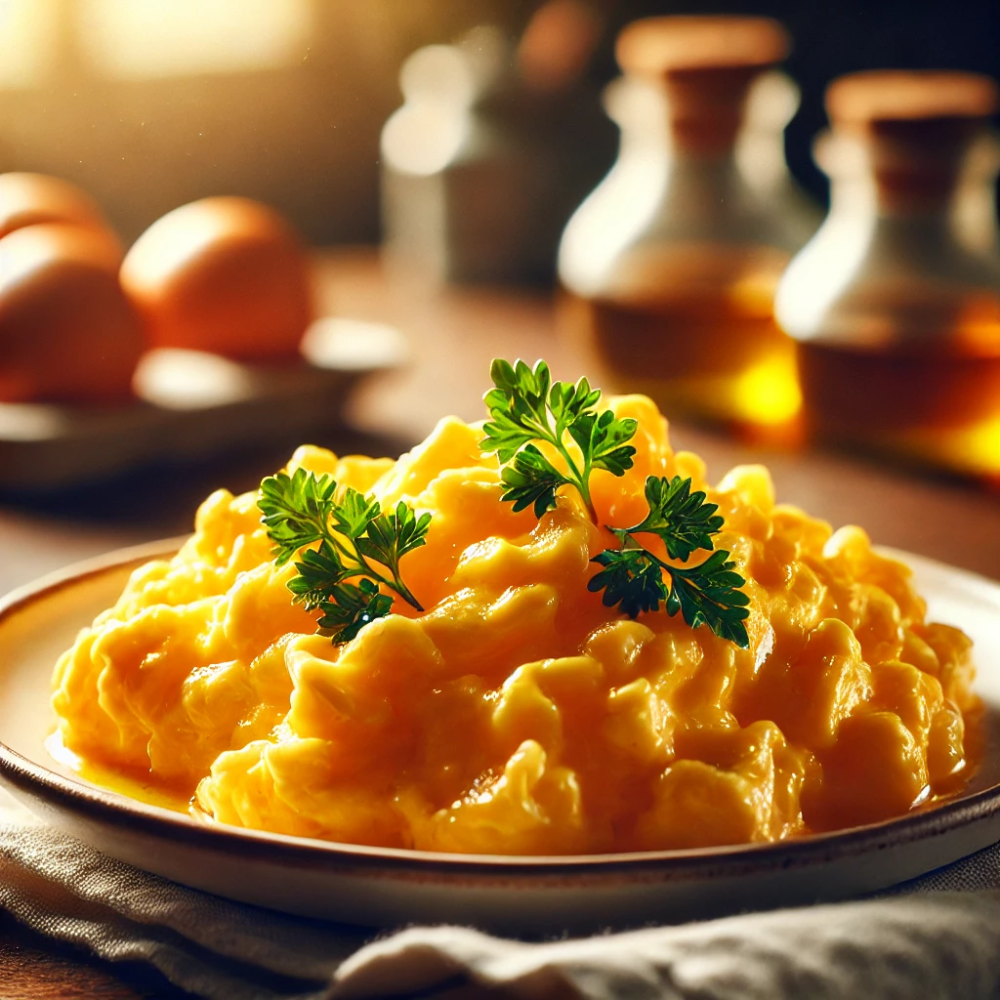Scrambled eggs are a breakfast staple, a quick and versatile meal that can be enjoyed any time of day. But achieving that perfect balance of creamy, fluffy, and flavourful scrambled eggs can be trickier than it seems. Let’s explore two popular methods: the classic hob approach and the speedy microwave version.
The Quest for Perfect Scrambled Eggs: Hob vs. Microwave
Method 1: The Hob Approach (Classic Creaminess)
This method offers greater control and typically results in a richer, creamier texture.
Ingredients:
- 2-3 eggs per person
- 1-2 tablespoons milk or cream (optional, for extra creaminess)
- 1 tablespoon butter or oil
- Salt and pepper to taste
Steps:
- Whisking: In a bowl, crack the eggs and whisk them thoroughly until the yolks and whites are fully combined. If desired, whisk in the milk or cream. Season with salt and pepper.
- Heating the Pan: Place a non-stick skillet over medium-low heat. Add the butter or oil and let it melt, coating the pan evenly.
- Pouring and Stirring: Pour the egg mixture into the hot pan. Let it sit undisturbed for a few seconds until the edges begin to set.
- Gentle Scrambling: Using a spatula, gently push the cooked edges towards the center, allowing the uncooked egg to flow underneath. Continue this process, stirring slowly and consistently, until the eggs are mostly cooked but still slightly moist.
- Removing from Heat: Remove the pan from the heat while the eggs are still slightly undercooked. The residual heat will continue to cook them to perfection.
- Serving: Serve immediately for the best texture.
Method 2: The Microwave Method (Speed and Convenience)
For those pressed for time, the microwave provides a quick and efficient way to scramble eggs.
Ingredients:
- 2-3 eggs per person
- 1-2 tablespoons milk or cream (optional)
- Salt and pepper to taste
Steps:
- Whisking: In a microwave-safe bowl, crack the eggs and whisk them thoroughly. If desired, whisk in the milk or cream. Season with salt and pepper.
- Microwaving (Initial Cook): Microwave on high for 30 seconds.
- Stirring: Remove the bowl from the microwave and stir the eggs with a fork.
- Microwaving (Final Cook): Microwave for another 30-60 seconds, or until the eggs are mostly cooked but still slightly moist. The exact time will depend on your microwave’s power.
- Resting: Remove from the microwave and stir. The residual heat will finish cooking the eggs.
- Serving: Serve immediately.
Spice It Up: Anti-Inflammatory Additions
To enhance the flavour and add anti-inflammatory properties, consider incorporating these ingredients:
- Turmeric: A pinch of turmeric powder adds a vibrant yellow hue and potent anti-inflammatory benefits. Add it during the whisking stage.
- Ginger: Grated fresh ginger or a pinch of ground ginger adds a warm, spicy kick and anti-inflammatory properties. Add it during the whisking stage.
- Spinach: Fresh spinach leaves wilt quickly when added to the hot eggs, providing a boost of vitamins and antioxidants. Add it during the cooking stage.
- Onions and Garlic: Sautéed onions and garlic add depth of flavour and contain compounds with anti-inflammatory effects. Sauté these before adding the eggs.
- Black Pepper: Black pepper helps enhance the absorption of turmeric’s active compound, curcumin. A dash of fresh cracked pepper on the finished eggs is great.
- Herbs: Fresh herbs like parsley, cilantro, or chives add freshness and flavor. Many herbs also contain anti-inflammatory compounds. Add these at the end.
- Avocado: Sliced avocado on top of the eggs provides healthy fats and anti-inflammatory benefits.
- Olive Oil: Use extra virgin olive oil to cook the eggs on the hob. Olive oil contains healthy fats and has anti-inflammatory properties.
- Wild Salmon: Add cooked wild salmon to the eggs. Wild salmon is high in omega-3 fatty acids, which have potent anti-inflammatory effects.
By combining these flavourful and health-boosting additions, you can transform your scrambled eggs into a delicious and nutritious meal that supports your well-being. Enjoy! Whether you prefer the classic, creamy texture of hob-cooked eggs or the speedy convenience of the microwave, mastering the art of scrambled eggs is a rewarding culinary endeavour. And with a dash of creativity and a sprinkle of anti-inflammatory ingredients, you can elevate this simple dish into a nutritional powerhouse.
Remember, the key to perfect scrambled eggs lies in gentle cooking and avoiding overcooking. Regardless of your chosen method, always err on the side of slightly undercooked eggs, as they will continue to cook from residual heat.
Experiment with different additions and seasonings to find your favourite flavour combinations. From the earthy warmth of turmeric and ginger to the vibrant freshness of herbs and spinach, the possibilities are endless. So, grab your whisk, heat up your pan (or microwave!), and embark on your own scrambled egg adventure. Your taste buds – and your body – will thank you!
Join our Retirement Club
Get help to protect and grow your business faster with CheeringUpInfo
Find out more about Lifestyle Improvement Club Corporate Membership
Subscribe for more lifestyle improvement tips reviews and money saving ideas deals offers discounts
Read more lifestyle improvement articles and view videos for free
Read more lifestyle improvement articles and view videos:
- How to make perfectly creamy scrambled eggs on hob with anti-inflammatory spices
- Easy microwave scrambled egg recipe with turmeric and ginger for quick breakfast
- Step by step guide to fluffy scrambled eggs on stove top with spinach and avocado
- Best way to cook scrambled eggs in microwave without rubbery texture with olive oil
- Healthy scrambled egg recipe with herbs and salmon for anti-inflammatory diet breakfast
hashtags:
- #EggAlchemy
- #YolkZenith
- #ScrambleSorcery
- #MicrowaveMarvelsAndHobHappenings
- #AntiInflammatoryOmletteOdyssey
- #CheeringUpInfo
- #CheeringUpTV
- #RetirementMagazine
- #RetirementTV
- #Over55s
The Quest for Perfect Scrambled Eggs: Hob vs. Microwave
